Abstract
Phototropic response in etiolated pea (Pisum sativum L. cv Alaska) seedlings is poor. However, the curvature induced by unilateral blue light can be hastened and increased in magnitude by a previously administered red light pulse followed by several hours of darkness. Phytochrome is involved in the red light effect. Phototropic response was almost completely inhibited by removal of the apical bud and hook, but it was restored if exogenous indole-3-acetic acid was applied apically to the cut stump. Therefore, the stem contains both the phototropic photoreceptor and response mechanism. Perception of gravity and gravitropic response were also localized in the stem, but gravitropism was scarcely inhibited by decapitation. It was also observed that the kinetics and curvature pattern of gravitropism differed greatly from those of phototropism. Like phototropism, stem nutation required auxin and was promoted by red light. Unlike phototropism, photoenhanced nutational curvature required the apical hook and was propagated as a wave down the stem. Naphthylphthalamic acid inhibited, in order of decreasing effect, nutation, phototropism/gravitropism, and growth. Phototropism, gravitropism, and nutation appear to represent distinct forms of stem movement with fundamental differences in the mechanisms of curvature development.
Full text
PDF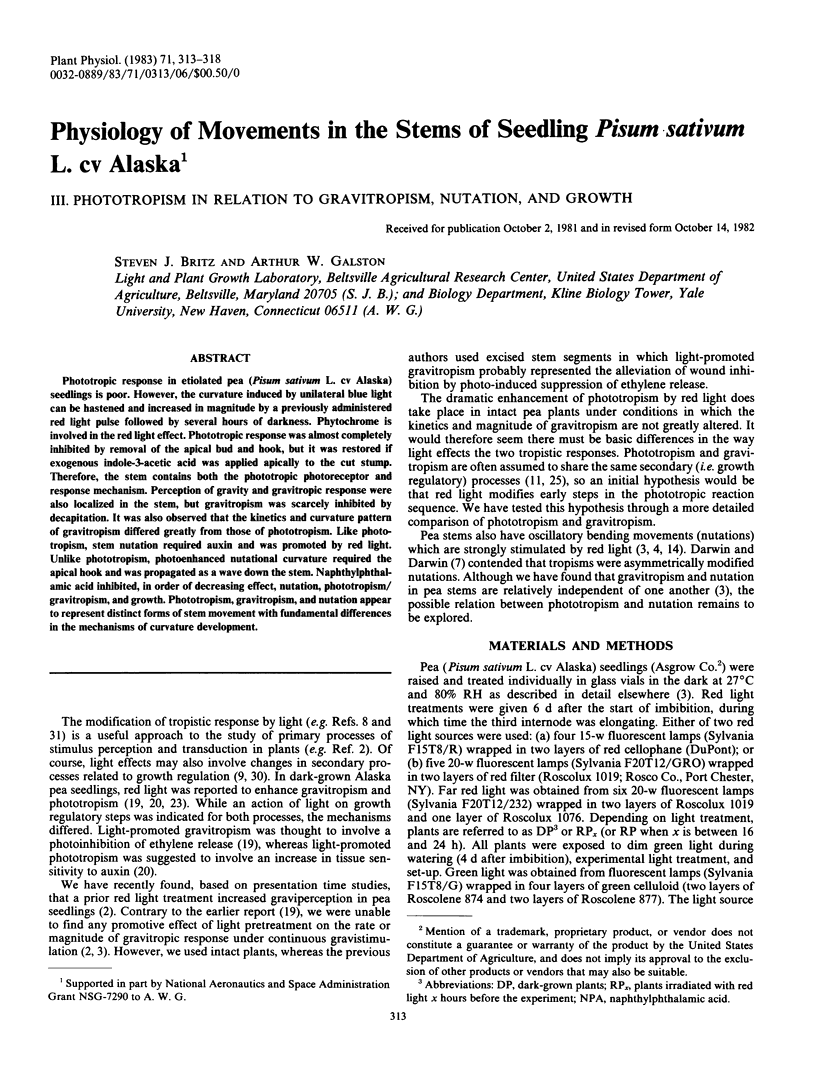
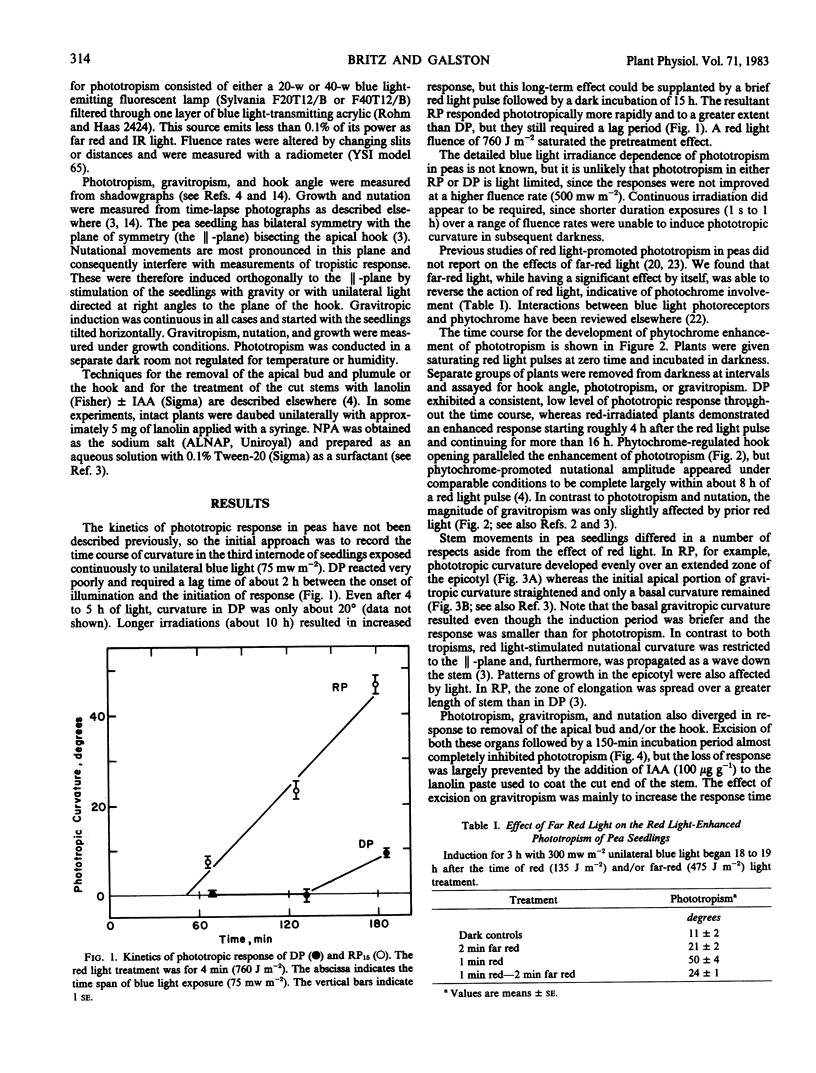
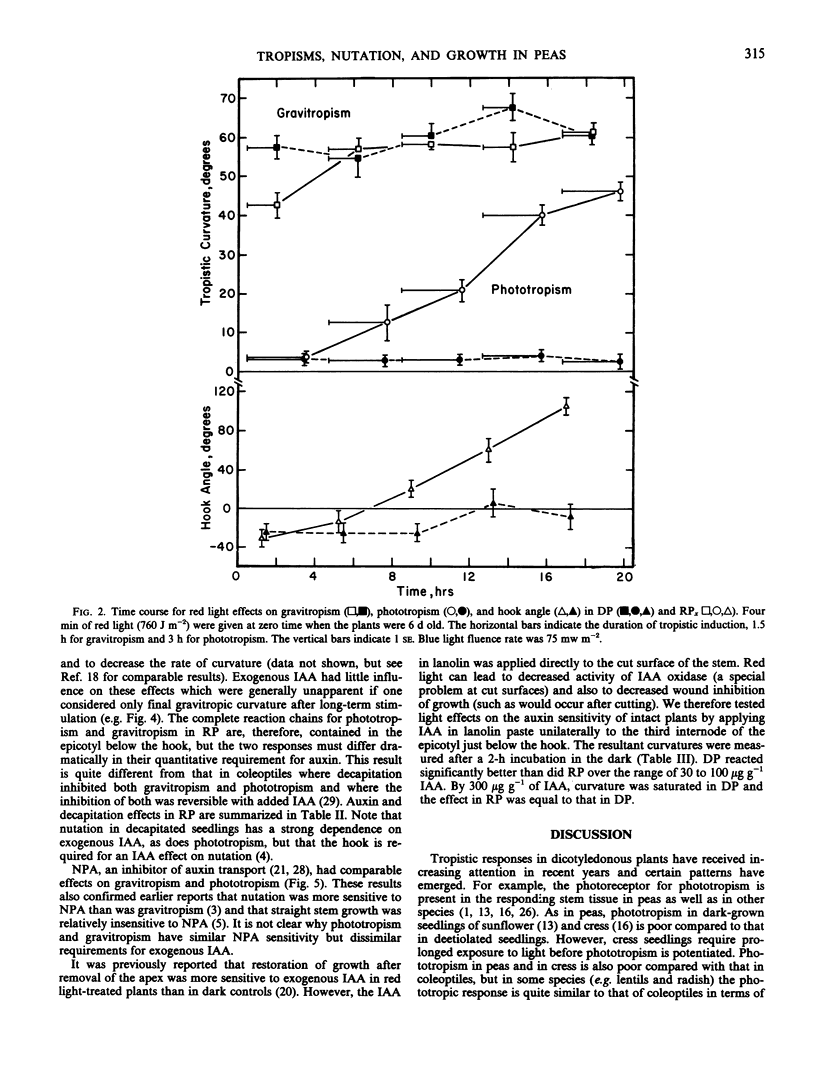
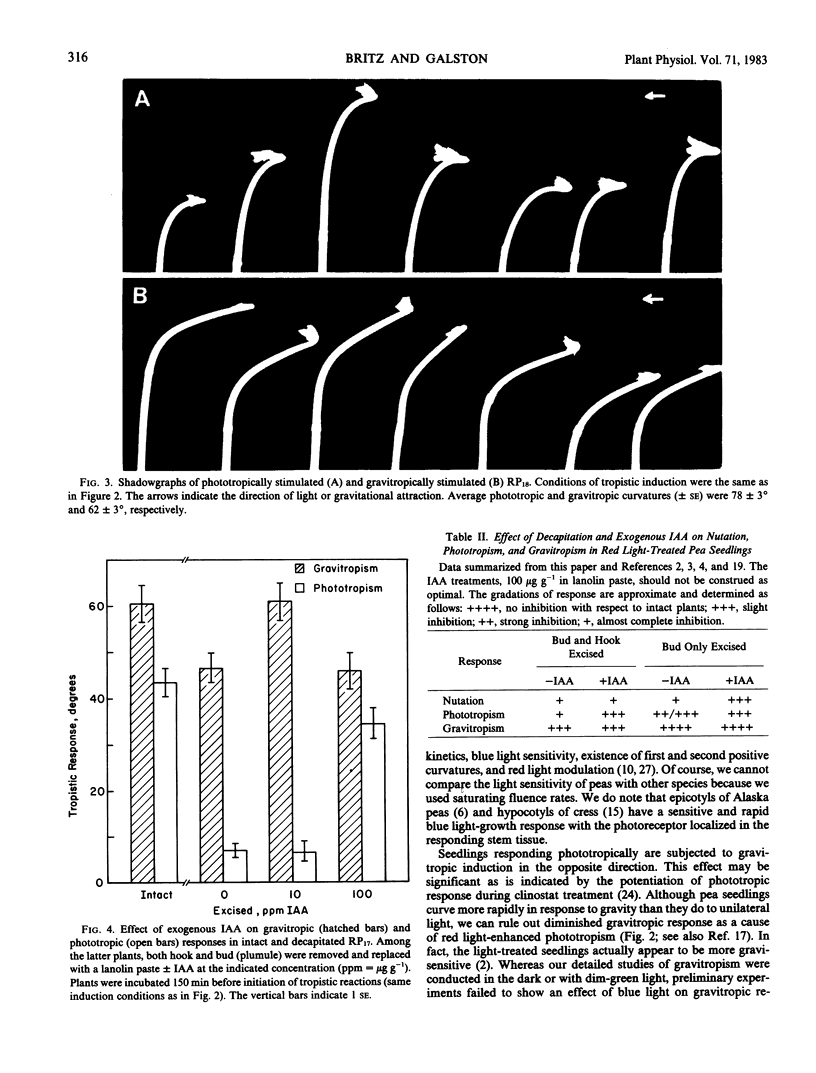
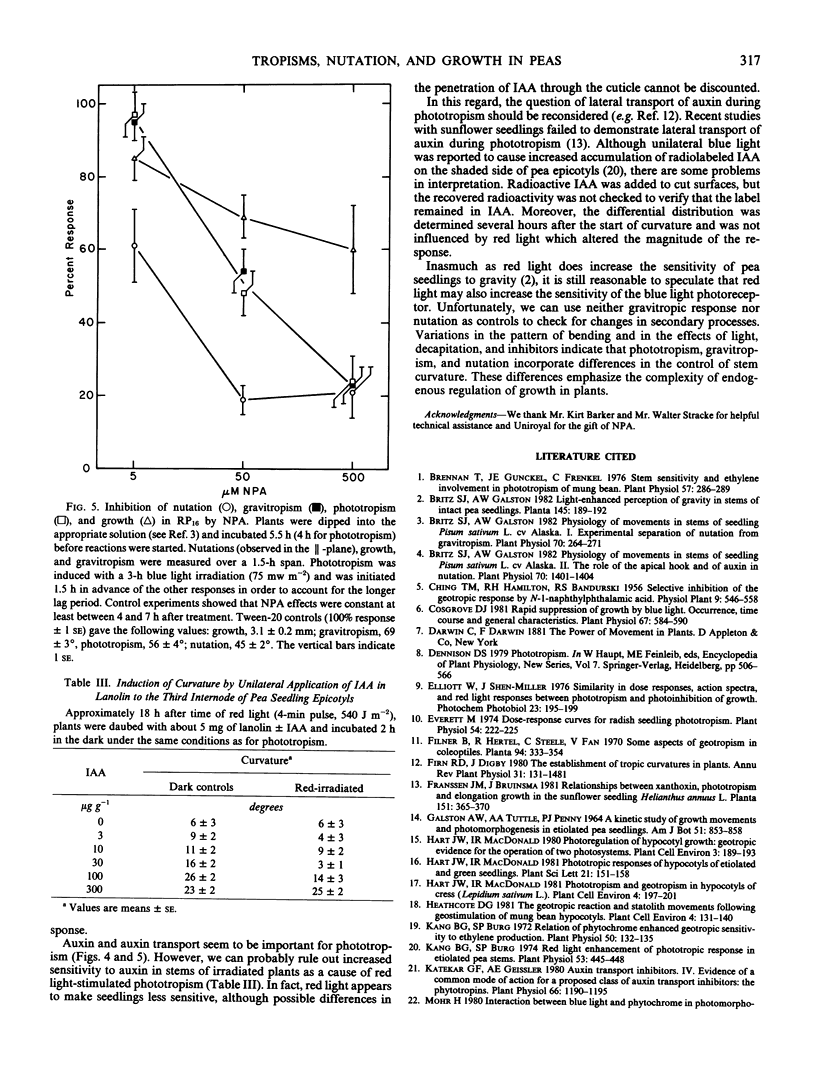
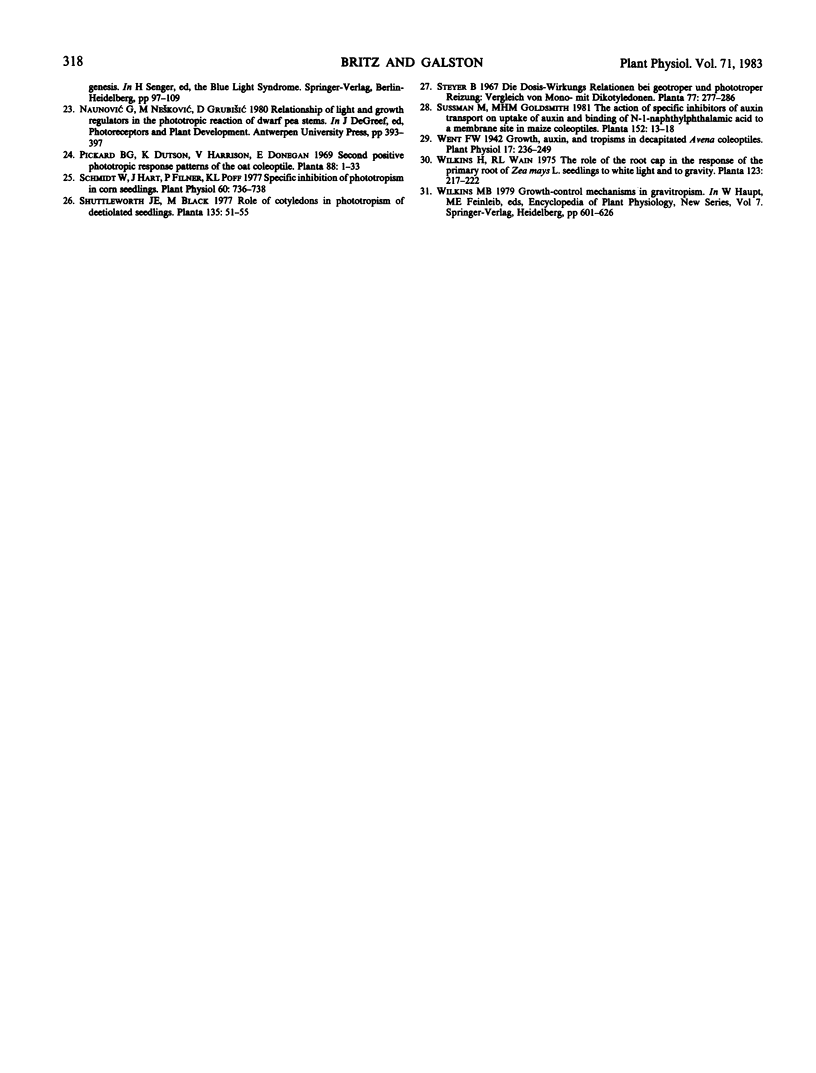
Images in this article
Selected References
These references are in PubMed. This may not be the complete list of references from this article.
- Brennan T., Gunckel J. E. Stem sensitivity and ethylene involvement in phototropism of mung bean. Plant Physiol. 1976 Feb;57(2):286–289. doi: 10.1104/pp.57.2.286. [DOI] [PMC free article] [PubMed] [Google Scholar]
- Britz S. J., Galston A. W. Physiology of Movements in Stems of Seedling Pisum sativum L. cv Alaska : II. The Role of the Apical Hook and of Auxin in Nutation. Plant Physiol. 1982 Nov;70(5):1401–1404. doi: 10.1104/pp.70.5.1401. [DOI] [PMC free article] [PubMed] [Google Scholar]
- Britz S. J., Galston A. W. Physiology of Movements in Stems of Seedling Pisum sativum L. cv. Alaska : I. Experimental Separation of Nutation from Gravitropism. Plant Physiol. 1982 Jul;70(1):264–271. doi: 10.1104/pp.70.1.264. [DOI] [PMC free article] [PubMed] [Google Scholar]
- Cosgrove D. J. Rapid Suppression of Growth by Blue Light: OCCURRENCE, TIME COURSE, AND GENERAL CHARACTERISTICS. Plant Physiol. 1981 Mar;67(3):584–590. doi: 10.1104/pp.67.3.584. [DOI] [PMC free article] [PubMed] [Google Scholar]
- Elliott W. M., Shen-Miller J. Similarity in dose responses, action spectra and red light responses between phototropism and photoinhibition of growth. Photochem Photobiol. 1976 Mar;23(3):195–199. doi: 10.1111/j.1751-1097.1976.tb07241.x. [DOI] [PubMed] [Google Scholar]
- Everett M. Dose-response curves for radish seedling phototropism. Plant Physiol. 1974 Sep;54(3):222–225. doi: 10.1104/pp.54.3.222. [DOI] [PMC free article] [PubMed] [Google Scholar]
- Kang B. G., Burg S. P. Red light enhancement of the phototropic response of etiolated pea stems. Plant Physiol. 1974 Mar;53(3):445–448. doi: 10.1104/pp.53.3.445. [DOI] [PMC free article] [PubMed] [Google Scholar]
- Kang B. G., Burg S. P. Relation of Phytochrome-enhanced Geotropic Sensitivity to Ethylene Production. Plant Physiol. 1972 Jul;50(1):132–135. doi: 10.1104/pp.50.1.132. [DOI] [PMC free article] [PubMed] [Google Scholar]
- Katekar G. F., Geissler A. E. Auxin Transport Inhibitors: IV. EVIDENCE OF A COMMON MODE OF ACTION FOR A PROPOSED CLASS OF AUXIN TRANSPORT INHIBITORS: THE PHYTOTROPINS. Plant Physiol. 1980 Dec;66(6):1190–1195. doi: 10.1104/pp.66.6.1190. [DOI] [PMC free article] [PubMed] [Google Scholar]
- Schmidt W., Hart J., Filner P., Poff K. L. Specific inhibition of phototropism in corn seedlings. Plant Physiol. 1977 Nov;60(5):736–738. doi: 10.1104/pp.60.5.736. [DOI] [PMC free article] [PubMed] [Google Scholar]
- Went F. W. GROWTH, AUXIN, AND TROPISMS IN DECAPITATED AVENA COLEOPTILES. Plant Physiol. 1942 Apr;17(2):236–249. doi: 10.1104/pp.17.2.236. [DOI] [PMC free article] [PubMed] [Google Scholar]



